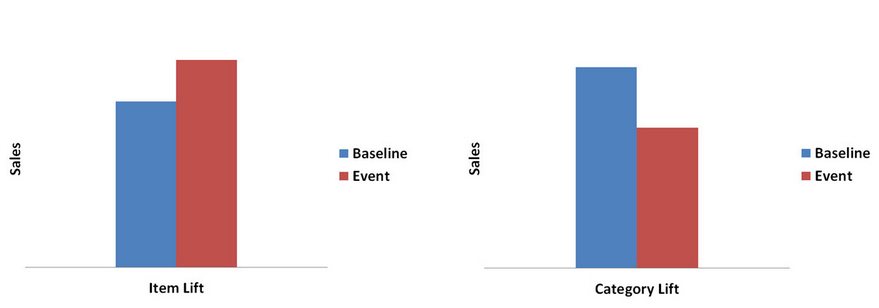What good is any business action if you can’t measure the success of it? Such is especially true when it comes to trade promotions. While many teams understand the importance of KPIs that demonstrate the direct ROI of their trade promotions, industry professionals are beginning to understand that trade promotion management KPIs need to go further than simply counting units sold or analyzing an increase in sales.
Whether or not your promotion was a fiscal success is important, but it certainly isn’t the end-all be-all of promotion success. When it comes to developing a truly successful approach to trade promotions, teams need to focus on KPIs that go beyond sales numbers in order to get a more complete picture of how their strategy is performing over time. With the right KPIs, your team can engage in a strong trade promotion optimization strategy, improving on your approach over time and maximizing the value of all of your promotional activity.
Below, we came up with a list of 6 KPIs that will help you take a smarter, more deliberate approach to your trade promotions. While you may already have some in place, combining all of these in your approach is the best way to get the full picture on trade promotion success.
Sales Generated
The most straightforward of trade promotion KPIs, calculating the sales generated during a promotion gives you a surface level idea of whether a promotion was successful or not. Remember, however, that just because you had a boost in sales doesn’t necessarily mean the promotion had a wholly positive impact on your brand. Tracking your general sales during a promotion is mostly useful as a relative metric when you compare it against other KPIs.
Incremental Sales Lift
This calculates the change in revenue associated with the promotion. Your sales during the campaign may be positive, but did you breakeven or outperform your non-promotional projected return? Incremental sales lift can be calculated by subtracting your baseline sales (determined by historic sales data for the area) from your total earned revenue during a campaign.

Trade Spend
In order to put your sales lift into perspective, it is critical to also track trade spend. Trade spend takes into account all of the money you spent in order to run the promotion in the first place. In an ideal situation, your incremental sales lift during the promotion should far surpass not just the amount of money you spent on the promotion, but also the amount of baseline sales you could’ve expected had you not run the promotion in the first place.
Hours Worked
Teams often overlook the importance of non-monetary KPIs during promotions, which is a huge mistake when it comes to optimization. The amount of hours that go into executing a promotion can provide brands with serious insight. Even if your sales numbers look great and the promotion was a success, taking a holistic look at your expenses might reveal that you overworked your reps, spent more money on hourly workers for more hours worked than necessary, or generally could improve on time management. Optimizing not just to get the most out of money but also time spent during a promotion is key to success.
Orders Placed
Another lesser-used trade promotion KPI is tracking orders placed. This is important because it can inform you about the quality of your promotion planning. If you set a goal for the number of orders that will need to be placed during a promotion, you should be using historic sales and trade promotion analysis data to get the most accurate estimate for the number of orders you’ll need. At the end of the promotion, comparing your expected number of orders to your actual number can give you an idea of how well prepared your team was for any upticks in sales, how accurately you prepared against out-of-stocks, and whether you actually moved as much product as you expected to in the first place.
Cannibalization
Monitoring cannibalization during a promotion is another crucial part of understanding your promotional success on a broader level. An increase in product sales is noteworthy, but it needs to be put into perspective with your brand’s category as a whole. Be sure to monitor the sales of all of your products closely during a promotion — if you notice cannibalization, it’s time to take a look at what features of your products are most important to consumers, and which ones they are willing to compromise on to take advantage of promotional pricing instead.


.png?width=480&height=252&name=PRESS%20RELEASE-2%20(4).png)

